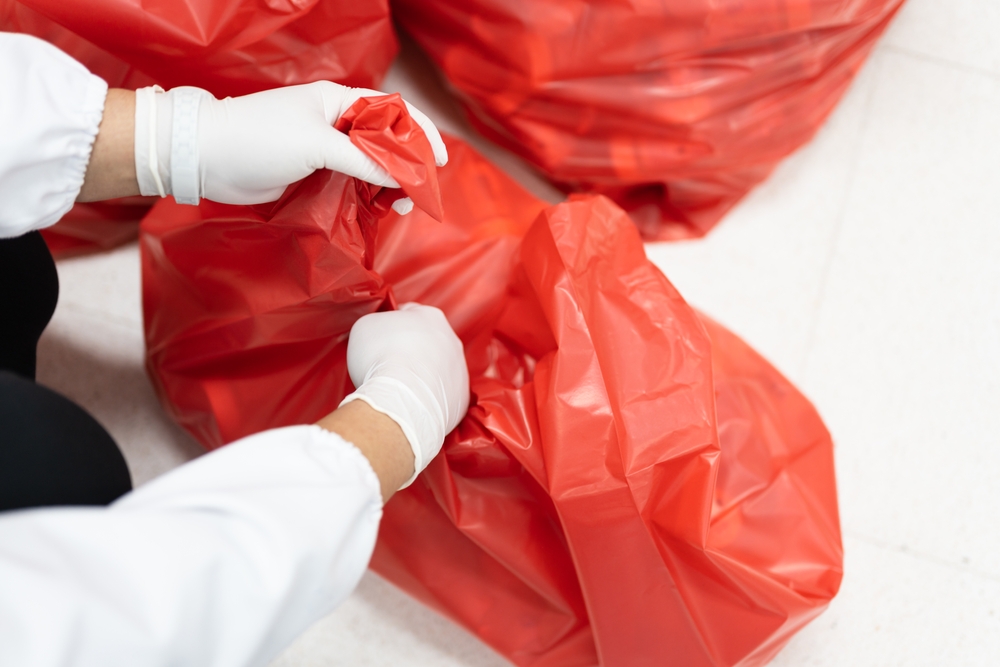The pandemic has created capacity issues in hospitals, pushing more care into the home. Some of those people are cared for by professionals in the industry, and more people have taken on the role of at-home caregiver for their loved ones. But what about those who live alone and are left to care for themselves? Or those patients who live in under served communities and have limited access to health care resources? Health inequities have created new and often overlooked safety challenges with medical waste generated in home care settings. Home health providers have expressed concern that their patients may not have a clear understanding of the proper ways to dispose of medical waste.
Building the Case for Medical Waste Disposal Education
There are significant health and safety challenges and risks to any type of in-home health care delivery. Patients or others who live there can be easily injured or sickened by hazardous waste in the home if they do not know how to dispose of it properly. The recent Healthcare Workplace Safety Trend Report found that the majority of health care providers say a core challenge of providing care in the home is properly disposing of medical waste. Waste management may not be an immediate thought for most individuals after receiving care, but it is an important step in keeping themselves and others safe, especially when dealing with hazardous materials.
One in four providers who have worked in a home care setting say that they are not confident that they know how to dispose of medical waste in a safe manner. If trained professionals have these issues, then people taking care of themselves or their loved ones may really not be prepared to properly handle medical waste. In fact, only about half of providers believe their patients know how to dispose of medical waste safely at home, according to the report. This is a cause for alarm, especially for those patients who do not have a trained at-home care professional or additional household members to support their care.
To protect the health and well-being of patients in home care settings, home health organizations should work with their waste management partners to arm their caregivers and patients with the training, tools and clear procedures they need to properly dispose of medical and pharmaceutical waste, such as on-site or online trainings with HIPAA and Occupational Safety and Health Administration experts and on-demand compliance resources.
If both home health providers and patients have access to medical waste disposal training and resources, they will feel more empowered to manage waste safely.
Access to Safe Disposal
In formal medical settings like hospitals or clinics, health care providers have access to designated containers and processes to handle bodily fluids, sharps and pharmaceutical waste. Those resources may not be available in a home health care setting, and that’s likely why many home care providers believe medical waste is a core challenge for their work. The improper disposal of medical waste in the home can have serious consequences, from injuring patients, providers and waste workers to harming communities and the environment.
In-home caregivers may also struggle with the disposal of pharmaceutical waste. A recent study study found that more than half of health care workers believe that improperly handled pharmaceutical waste is one of the biggest contributors to the opioid epidemic. And nearly three in four health care workers indicate that COVID-19 has made proper pharmaceutical waste management more challenging. Discarding pharmaceuticals can have a broader impact on the person’s community, as improperly disposed pharmaceuticals can end up in the wrong hands or contaminate waterways.
To overcome these challenges, home health organizations should collaborate with their waste management partners to develop simple, easy-to-follow waste disposal procedures to be shared with patients upon discharge from the hospital. For example, home care organizations can guide patients to sharps and pharmaceutical mail-back disposal options to help reduce the risk of needle stick injuries. And they can provide containers safe for hazardous materials so that they are not disposing of medical waste in regular trash bins.
Understanding Differences in Patient Needs
There is no one-size-fits-all approach when delivering care. Every patient has their own set of needs and requires guidance to be set up for success when continuing their care on their own. That is especially true of those in underprivileged communities or those who live alone. Under served communities and patients who live alone often have the most challenges when accessing health care resources, with an estimated 3.6 million people missing care due to lack of transportation. In the U.S., almost a quarter of the population lives alone and over 11% live in poverty. The pandemic has kept much of the world confined to their personal living spaces—leaving most people who live alone and in under served areas isolated and making it difficult for them to perform safe at-home care.
Safely disposing of medical waste in the home is often the last thing on someone’s mind. But it needs to become a priority for home care providers. By educating and equipping patients with safe disposal methods either before they leave the hospital or during the initial home health visit, providers can improve the quality of care they provide and, in turn, keep their patients and their communities safe.
This post, Education is Needed to Ensure Medical Waste is Managed Well, was shared by HomeCare on April 1, 2022.











